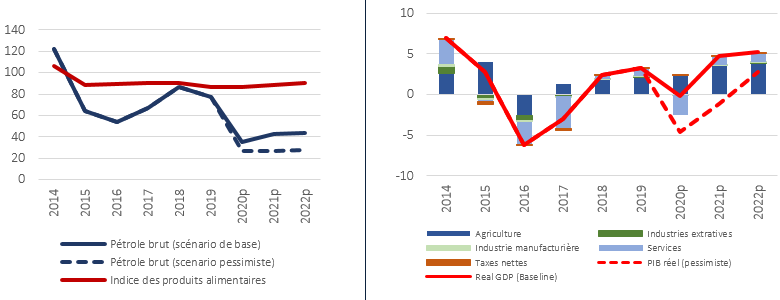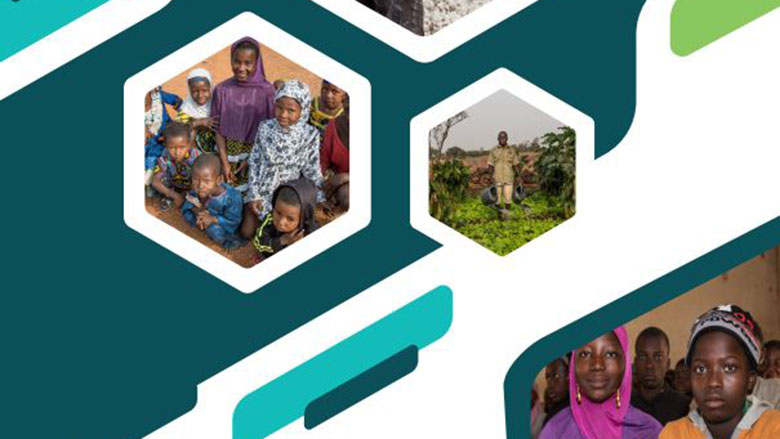N’DJAMENA, CHAD, September 30, 2020—Here are the takeaways from the Chad – Economic and Poverty Update under COVID-19: Before the COVID-19 pandemic—up to February 2020—Chad’s economy continued its gradual but modest recovery.
This recovery was supported by a substantial increase in oil and agricultural production. Following the severe recession in 2016-2017, growth recovered to 2.4% in 2018 and 3.2% in 2019. Non-oil GDP growth also increased from -0.9% in 2017 to 2.2% in 2019, owing to the rebound in the services sector.

Successful fiscal consolidation programs, which involved containment of the wage bill and strengthened efforts to mobilize non-oil revenue, also improved the fiscal balance and debt sustainability. The overall fiscal deficit declined from -5.8% of non-oil GDP in 2015 to -0.8% in 2019. The government also restructured its debt with the Glencore Oil Company, which restored liquidity and debt sustainability. Public debt decreased from a record high of 54.8% of GDP in 2016 to 44.3% in 2019, although the risk of debt distress remains high.
Subdued transportation and food prices kept inflation at -1% in 2019. The policy interest rate remained at 3.5%, allowing official regional reserves to reach 3.3 months of imports in 2019. The current account deficit widened, owing to an increase in FDI-related imports for several oil fields under development.
The poverty rate has declined over the past 15 years but remains high in the country.
Roughly 6.5 million Chadians (42% of the population) lived below the national poverty line in 2018[1] . Poor households have more children, less access to education, and often work in the agricultural sector under unfavorable farming conditions. Despite an improvement in the non-monetary situation of Chadians, the poor continue to live in precarious conditions, which are exacerbated by a lack of access to such basic services as clean water, sanitation, and electricity, and have limited access to assets.

There is great disparity in the distribution of poverty across regions, with the North having lower poverty rates than the other regions, with the exception of the capital city. In addition, Chadians experience high inequality in welfare distribution, with the top 20% accounting for more than 40% of total consumption against 8% for the bottom 20% of the population. [1]
Since March 2020, like the rest of the world, the COVID-19 pandemic has dramatically changed Chad’s macroeconomic outlook.
The adverse effects of the pandemic have not been so much about direct contagion but rather the global economic recession and the collapse of international oil prices it has triggered. Chad’s oil sector, which accounts for close to 80% of exports and 40% of government revenue, has been severely impacted. The decline in export demand, reduced FDI inflows, border closures, and social distancing measures risk tipping Chad back into a recession in 2020, with the economy projected to contract by 0.2% (compared to the pre-pandemic projected growth rate of 4.8%). Should the current account deficit widen, fiscal revenue and public spending will fall, while arrears accumulation is expected to increase. If the impact of the COVID-19 crisis is less severe in the coming months and confinement measures are eased, growth could rebound in 2021 as new oil fields accelerate production and oil prices recover.

In the short term, support is urgently needed for the poorest and vulnerable population groups that could be disproportionately impacted by fallout from the pandemic.
The authorities should continue to strengthen economic and social measures aimed at protecting lives, livelihoods, and the future. First and foremost, this requires:
- Upgrading capacity to screen and treat COVID-19 patients, enhancing public awareness, and improving the quality of and access to health services in general, particularly for the poor;
- Lessening the economic impact of the pandemic on household income by guaranteeing payment of salaries to civil servants, improving social safety net programs, and strengthening food security;
- Assessing the capacity of public enterprises to continue to provide basic services (in particular, water and electricity) to citizens during the crisis and maintaining the operations of essential public finance services; and
- Mitigating the impact of external shocks on Chad’s economy by expanding the tax base, strengthening the collection capacity of the tax and customs administrations, and adopting bold business-friendly reforms to accelerate economic diversification.
